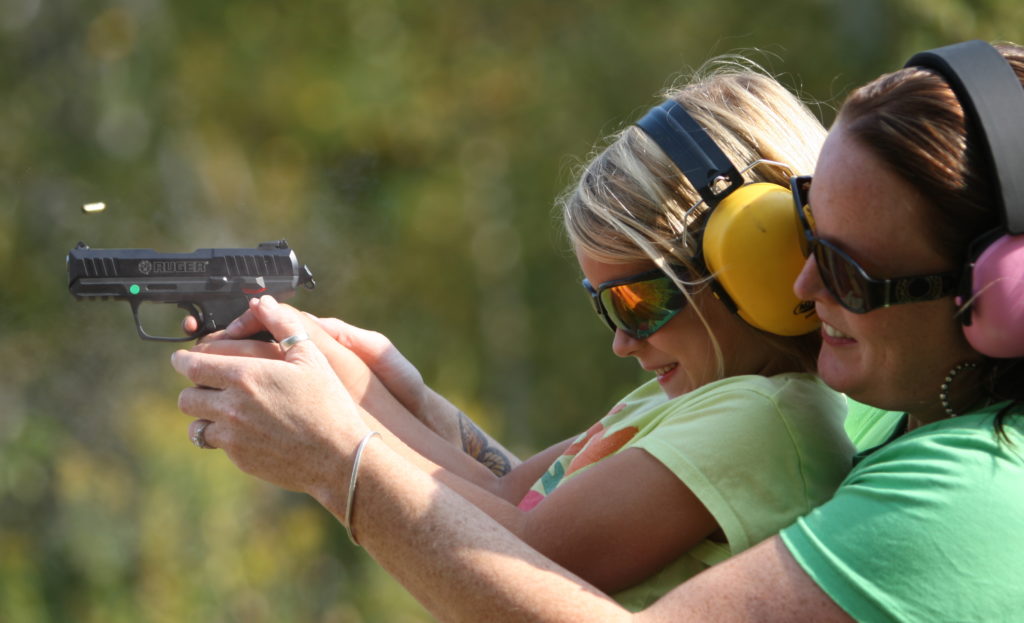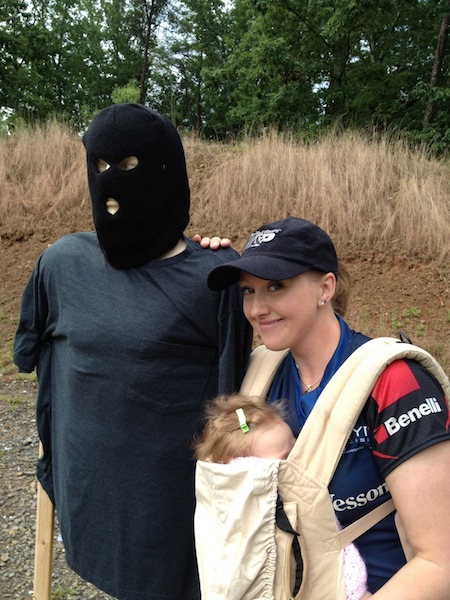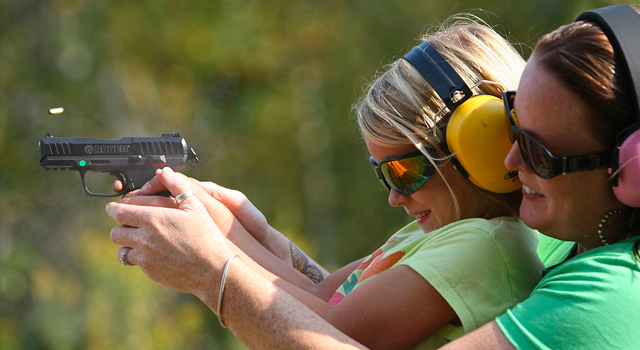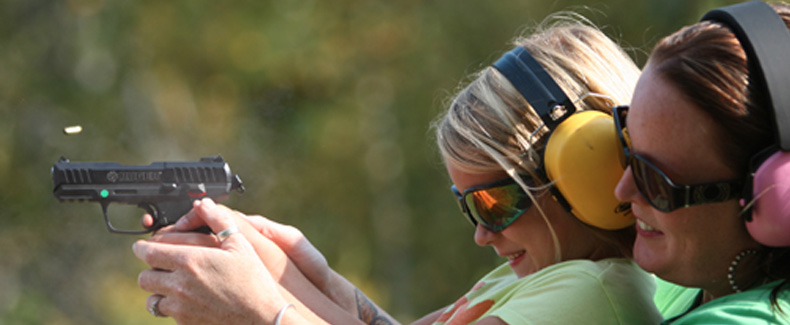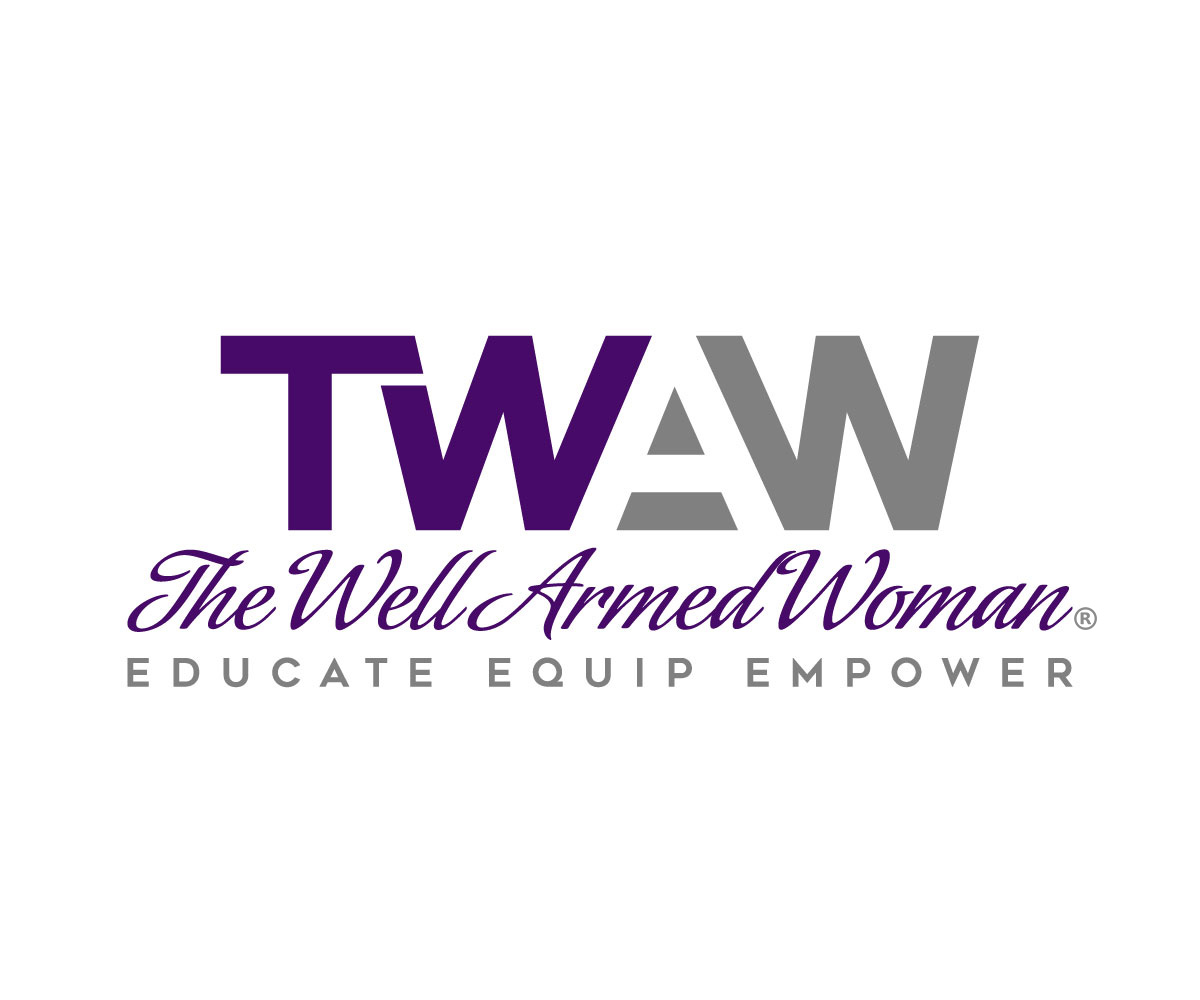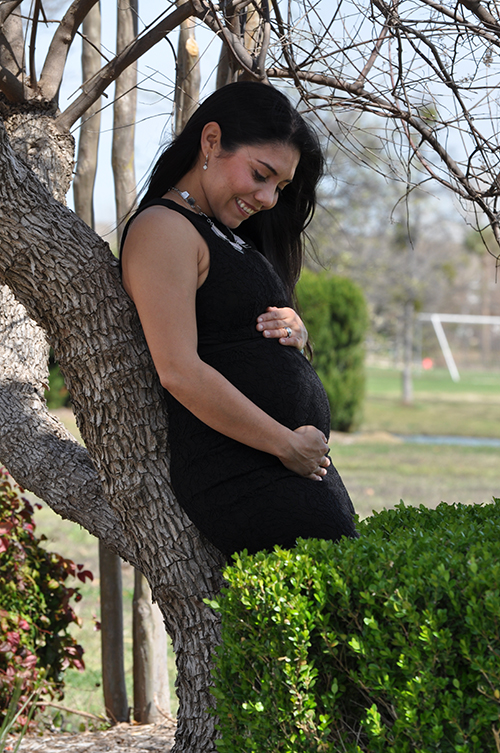
Guns & Babies – Part 2 – The Pregnancy
Mothers are always looking out for the best interest of their children, and that starts early. The choices that a mom-to-be makes while pregnant affect her baby. In my last article I discussed the topic of lead and the risks of exposure, as well as other chemical hazards while handling and shooting firearms. One of the most important questions to ask yourself is whether you should shoot when you’re pregnant? It’s something you should talk about with your doctor; the articles in this series should help you bring up topics for discussion so you both know the issues involved.
The Pregnancy
Noise Impact
Beyond lead and chemical exposure, the other major risk factor to an unborn baby is noise level.
In the United States, the Occupational Safety and Health Administration (OSHA) sets the permissible exposure limit for rapid-impulse noise at 140 decibels, with additional regulations for continuous noise. The sound levels of firearms are about 125–140 dB for rimfire rifles; 140–150 dB for rimfire pistols; and 150–160 dB for centerfire rifles, pistols, and shotguns. [1]
Any sound that’s above 85 dB can cause hearing loss. The loss relates to the length of exposure as well as the power of the sound. (Rule of thumb: If you have to raise your voice to be heard, the decibel level is over 85.) Eight hours of 90 dB sound can cause damage to your ears; any exposure to 140 dB sound causes immediate damage (and can cause actual pain).
In her downloadable resource “Shooting While Pregnant,” Julie Golob quotes an article from the American Academy of Pediatrics (“Noise: A Hazard for the Fetus and Newborn”) that lists studies that indicate risks to unborn babies exposed to noise. It concludes that “exposure to excessive noise during pregnancy may result in high-frequency hearing loss in newborns, and may be associated with prematurity and intrauterine growth retardation.” [2]
In one study, an artificial larynx was used to sound-stimulate 693 human fetuses with gestational age ranging from 21 to 42 weeks. Fetuses were monitored, with simultaneous ultrasound, for immediate, increased motor activity after the stimulus. Each was scored as either demonstrating for startle response or having no visible response to the stimulus. Four zones of gestational development were determined: a non-startle zone (gestation age below 24 weeks), in which none reacted; transitional zone A (24 to 27 weeks), in which 30 percent reacted; transitional zone B (27 to 30 weeks), in which 86 percent reacted; and the startle zone (above 31 weeks), in which 96 percent reacted. [3]
Noise exposure during pregnancy has been associated with several disorders, including miscarriage [4, 5], intrauterine growth retardation [6, 7, 8], preterm delivery [5, 8, 9], hearing loss in babies and children [10], altered immune response in the fetus [11] and hypertension [5]. Combined exposure to noise and lead seems to have increased toxicity, causing heart lesions, which are not observed for those agents alone [12]. Dr. Luther Terry, a former U.S. Surgeon General, agrees, saying that “excessive noise exposure during pregnancy can influence embryo development.”
The truth is, we simply do not yet know at what point the fetus is most susceptible to noise damage of the ear. Please consult your doctor and ask their opinion before deciding to head to the shooting range.
Carry Methods While Pregnant
Now that we are aware of the possible risks of lead and noise during pregnancy, let’s look at carrying a gun while pregnant. Self-defense is important during pregnancy, possibly even moreso than at other times. Your vulnerability increases, and it’s even more crucial to be prepared.
Until the end of the first trimester, an expectant mom’s body won’t physically change much. Soon after that, however, her body will begin to change regularly until the baby arrives. Not only will her belly expand, but her center of balance will shift as well.
Melody Lauer, a gun instructor with Central Iowa Defensive Training, regularly discusses her opinions, training, and experiences on her blog, Limatunes’ Range Diary. [13] In one entry, she addresses pregnancy holster options: “There is going to come a time when a belt is no longer an option, when a thigh holster (especially a good one which is kept from sliding down the leg via a garter around the weight) is inaccessible and an ankle holster is unreachable.” She suggests that the best options are above-the-waist and off-body carry methods, such as undershirts (holsters incorporated into clothing), shoulder holsters and concealed-carry purses.
Another firearms instructor, gun writer, and mother, Beth Alcazar, created a YouTube video addressing several issues pertaining to pregnancy and firearms. She not only discusses the best carry methods, but also talks about the changes in a woman’s body in regard to hormones and emotions. She mentions relaxin, a hormone that affects your body during pregnancy, causing ligaments and joints to loosen up in preparation for birth. Even though your pelvis is the main area that needs to be able to expand, the hormone works throughout the entire body, affecting hands and feet as well. Many women experience clumsiness and grip strength issues. These things can affect your ability to safely handle a firearm, including loading a magazine or racking the slide on a semi-automatic.
Hormones and Emotions
Pregnancy emotions also come into play and can feel like a roller-coaster ride at times. One minute you’re feeling excited and overjoyed, and the next minute you’re on the verge of tears. These are normal feelings, yet can be hard to control. As Beth says in her video: “Consider those; you might not want to take those emotions to the shooting range.”
Safe Ways to Train
One way to avoid both noise and lead contamination would be to practice using dry-fire drills and/or snap caps at home. Another option would be to get a LaserLyte target and the corresponding laser cartridge for your specific firearm. It will record the “hits” while avoiding lead and noise exposure. Also, continuing to practice drawing from a holster with an unloaded firearm, especially if it’s in a location that isn’t as familiar, will build good muscle memory. It’s important to keep your skills sharp, even while pregnant. For more on how to practice using dry-firing, click here.
In my next post I’ll cover how to carry a gun while holding a baby, what to think about before deciding to breastfeed, and ways to keep firearms safe from children.
Article written by Stacy Bright and reprinted courtesy of Women’s Outdoor News
[1] Shimm DS, Passamaneck M. Shooting noise, hearing loss, and hearing protection. Berryville (AR): International Defensive Pistol Association 2001
[2] American Academy of Pediatrics. “Noise: A Hazard for the Fetus and Newborn.”pediatrics.aappublications.org. Web.
[3] PMID:3054143 [PubMed – indexed for MEDLINE] Fetal response to sound stimulation: preliminary report exploring use of sound stimulation in routine obstetrical ultrasound examinations. US National Library of Medicine National Institutes of Health
[4]. Zhang J, Cai WW, Lee DJ. Occupational hazards and pregnancy outcomes. Am J Ind Med. 1992;21(3):397-408 MEDLINE
[5]. Zhan C, Lu Y, Li C, Wu Z, Long Y, Zhou L, et al. A study of textile noise influence on maternal function and embryo-growth. Hua Xi Yi Ke Da Xue Xue Bao. 1991;22(4):394-398
[6]. Hruba D, Kukla L, Tyrlik M. Occupational risks for human reproduction: ELSPAC Study. European Longitudinal Study of Pregnancy and Childhood. Cent Eur J Public Health. 1999;7(4):210-215 MEDLINE
[7]. Hartikainen AL, et al. Effect of occupational noise on the course and outcome of pregnancy. Scand J Work Environ Health. 1994;20(6):444-450 MEDLINE
[8]. Nurminen T. Female noise exposure, shift work, and reproduction. J Occup Environ Med. 1995;37(8):945-950 MEDLINE
[9]. Luke B, Mamelle N, Keith L, Munoz F, Minogue J, Papiernik E, et al. The association between occupational factors and preterm birth: a United States nurses’ study. Research Committee of the Association of Women’s Health, Obstetric, and Neonatal Nurses. Am J Obstet Gynecol. 1995;173(3 Pt 1):849-862 MEDLINE
[10]. Pierson LL. Hazards of noise exposure on fetal hearing. Semin Perinatol. 1996;20(1):21-29 MEDLINE
[11]. Sobrian SK, Vaughn VT, Ashe WK, Markovic B, Djuric V, Jankovic BD. Gestational exposure to loud noise alters the development and postnatal responsiveness of humoral and cellular components of the immune system in offspring. Environ Res. 1997;73(1–2):227-241 MEDLINE
[12]. Cary R, Clarke S, Delic J. Effects of combined exposure to noise and toxic substances–critical review of the literature. Ann Occup Hyg. 1997;41(4):455-465 MEDLINE
[13] Melody Lauer blog: http://limatunesrangediary.blogspot.com
[14] https://www.youtube.com/watch?v=uvyyuPAYrJE&feature=youtu.be (Beth Acazar)
Read on to Part 3 of our series ‘Guns and Babies: After the Pregnancy’ here
